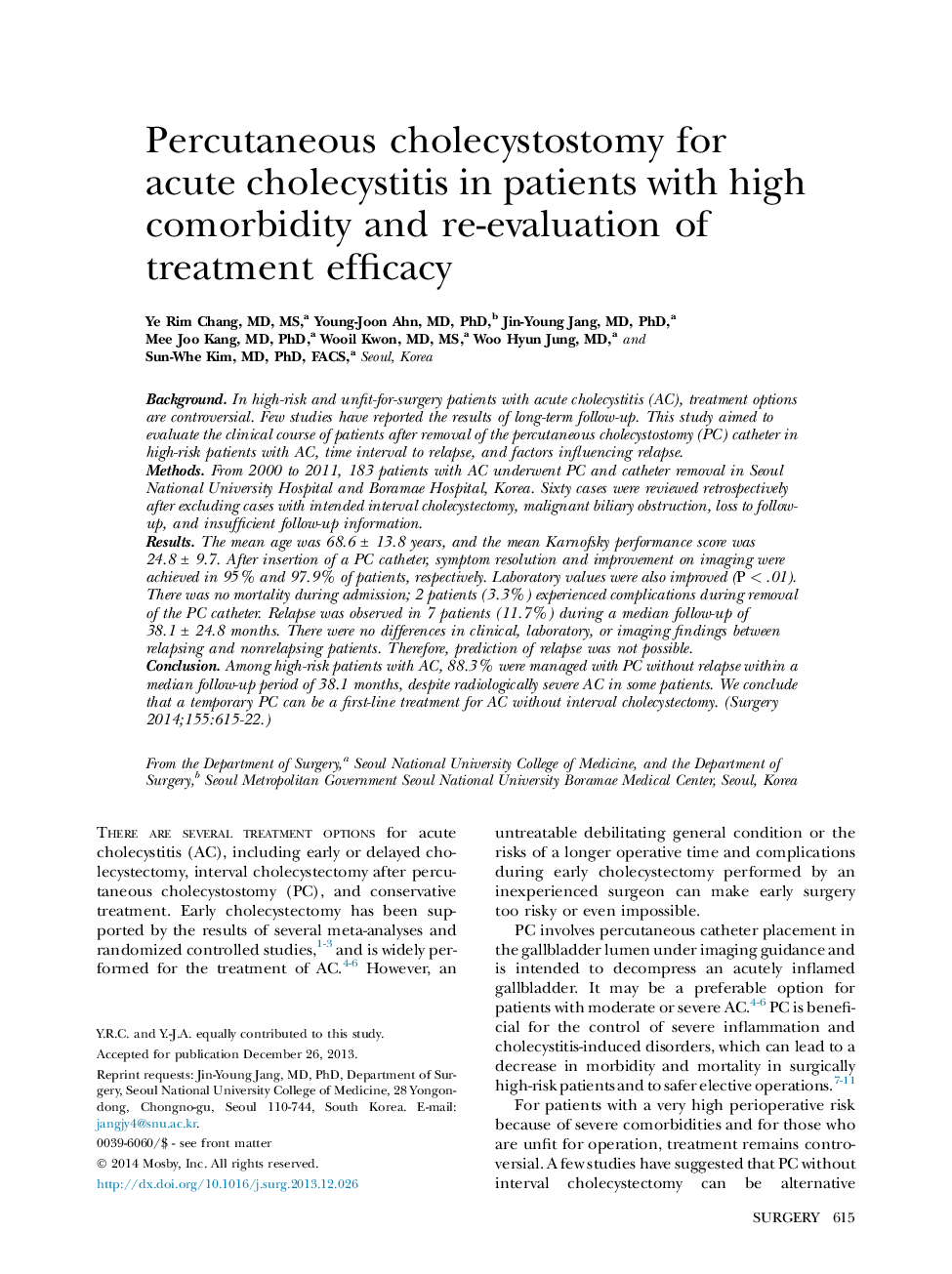| Article ID | Journal | Published Year | Pages | File Type |
|---|---|---|---|---|
| 4307277 | Surgery | 2014 | 8 Pages |
BackgroundIn high-risk and unfit-for-surgery patients with acute cholecystitis (AC), treatment options are controversial. Few studies have reported the results of long-term follow-up. This study aimed to evaluate the clinical course of patients after removal of the percutaneous cholecystostomy (PC) catheter in high-risk patients with AC, time interval to relapse, and factors influencing relapse.MethodsFrom 2000 to 2011, 183 patients with AC underwent PC and catheter removal in Seoul National University Hospital and Boramae Hospital, Korea. Sixty cases were reviewed retrospectively after excluding cases with intended interval cholecystectomy, malignant biliary obstruction, loss to follow-up, and insufficient follow-up information.ResultsThe mean age was 68.6 ± 13.8 years, and the mean Karnofsky performance score was 24.8 ± 9.7. After insertion of a PC catheter, symptom resolution and improvement on imaging were achieved in 95% and 97.9% of patients, respectively. Laboratory values were also improved (P < .01). There was no mortality during admission; 2 patients (3.3%) experienced complications during removal of the PC catheter. Relapse was observed in 7 patients (11.7%) during a median follow-up of 38.1 ± 24.8 months. There were no differences in clinical, laboratory, or imaging findings between relapsing and nonrelapsing patients. Therefore, prediction of relapse was not possible.ConclusionAmong high-risk patients with AC, 88.3% were managed with PC without relapse within a median follow-up period of 38.1 months, despite radiologically severe AC in some patients. We conclude that a temporary PC can be a first-line treatment for AC without interval cholecystectomy.
